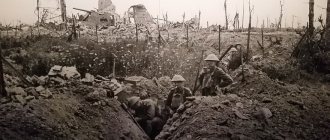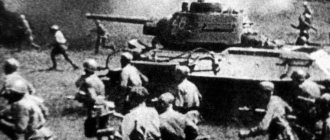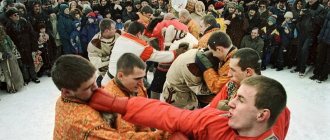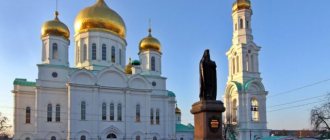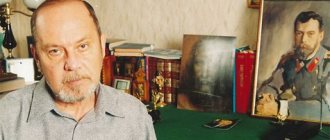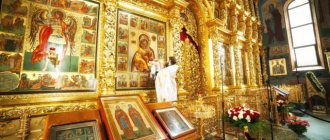The partisan movement during the Great Patriotic War was massive. Thousands of residents of the occupied territories joined the partisans in order to fight the invader. Their courage and coordinated actions against the enemy made it possible to significantly weaken him, which influenced the course of the war and brought a great victory to the Soviet Union.
Crimean partisans, photo 1944
The partisan movement during the Great Patriotic War was a mass phenomenon in the territory of the USSR occupied by Nazi Germany, which was characterized by the struggle of people living in the occupied lands against the forces of the Wehrmacht.
Partisans are the main part of the anti-fascist movement, the Resistance of the Soviet People. Their actions, contrary to many opinions, were not chaotic - large partisan detachments were subordinate to the governing bodies of the Red Army.
The main tasks of the partisans were to disrupt the enemy's road, air and railway communications, as well as to undermine the operation of communication lines.
Interesting! As of 1944, over one million partisans were operating in the occupied lands.
During the Soviet offensive, partisans joined the regular troops of the Red Army.
Beginning of the guerrilla war
It is now well known what role the partisans played in the Great Patriotic War. Partisan brigades began to be organized in the first weeks of hostilities, when the Red Army was retreating with huge losses.
A group of partisans "Bolshevik of the Arctic" returning from a combat operation
The main goals of the Resistance movement were set out in documents dating from June 29 of the first year of the war. On September 5, they developed a wide list that formulated the main tasks for the fight in the rear of German troops.
In 1941, a special motorized rifle brigade was created, which played a vital role in the development of the partisan movement during the Great Patriotic War. Separate sabotage groups (usually several dozen people) were specially sent behind enemy lines in order to replenish the ranks of partisan groups.
The formation of partisan detachments was caused by the brutal Nazi regime, as well as the removal of civilians from enemy-occupied territory to Germany for hard work.
A Wehrmacht soldier kicks the body of a hanged Soviet partisan
In the first months of the war, there were very few partisan detachments, since most of the people took a wait-and-see attitude. Initially, no one supplied the partisan detachments with weapons and ammunition, and therefore their role at the beginning of the war was extremely small.
In the early autumn of 1941, communication with the partisans in the deep rear improved significantly - the movement of partisan detachments intensified significantly and began to be more organized. At the same time, the interaction of the partisans with the regular troops of the Soviet Union (USSR) improved - they took part in battles together.
Often, the leaders of the partisan movement during the Great Patriotic War were ordinary peasants who had no military training. Later, the Headquarters sent its own officers to command the detachments.
In the first months of the war, the partisans gathered in small detachments of up to several dozen people. After less than six months, the fighters in the detachments began to number hundreds of fighters. When the Red Army went on the offensive, the detachments turned into entire brigades with thousands of defenders of the Soviet Union.
The largest detachments arose in the regions of Ukraine and Belarus, where German oppression was especially severe.
P.A. Sudoplatov
A striking example of the actions of special forces groups was the destruction of the headquarters of the 59th Wehrmacht division along with the head of the Kharkov garrison, Lieutenant General Georg von Braun. Mansion at st. Dzerzhinsky No. 17 was mined with a radio-controlled landmine by a group under the command of I.G. Starinov and detonated by radio signal in October 1941. Later, Lieutenant General Beinecker was also destroyed by a mine . I.G. Starinov
Mines and non-recoverable landmines designed by I.G. Starinova were widely used for sabotage operations during the Second World War.
Main activities of the partisan movement
An important role in organizing the work of resistance units was the creation of the Headquarters of the Partisan Movement (TsSHPD). Stalin appointed Marshal Voroshilov to the post of commander of the Resistance, who believed that their support was the key strategic goal of the spacecraft.
The commander of a resistance detachment hands a combat carbine to a fighter
In the small partisan detachments there were no heavy weapons - light weapons predominated: rifles;
- rifles;
- pistols;
- machine guns;
- grenades;
- light machine guns.
Large brigades had mortars and other heavy weapons, which allowed them to fight against enemy tanks.
The partisan and underground movement during the Great Patriotic War seriously undermined the work of the German rear, reducing the combat effectiveness of the Wehrmacht in the lands of Ukraine and the Belarusian SSR.
Partisan detachment in destroyed Minsk, photo 1944
Partisan brigades were mainly engaged in blowing up railways, bridges and trains, making the rapid transfer of troops, ammunition and provisions over long distances unproductive.
The groups that were engaged in subversive work were armed with powerful explosives; such operations were led by officers from specialized units of the Red Army.
The main task of the partisans during the fighting was to prevent the Germans from preparing a defense, undermine morale and inflict such damage on their rear from which it is difficult to recover. Undermining communications - mainly railways, bridges, killing officers, depriving communications and much more - seriously helped in the fight against the enemy. The confused enemy could not resist, and the Red Army was victorious.
Members of the partisan movement escort a captured Wehrmacht soldier
Initially, small (about 30 people) units of partisan detachments took part in large-scale offensive operations of the Soviet troops. Then entire brigades joined the ranks of the spacecraft, replenishing the reserves of the troops weakened by the battles.
As a conclusion, we can briefly highlight the main methods of struggle of the Resistance brigades:
- Sabotage work (pogroms were carried out in the rear of the German army) in any form - especially in relation to enemy trains.
- Intelligence and counterintelligence.
- Propaganda for the benefit of the Communist Party.
- Combat assistance by the Red Army.
- Elimination of traitors to the motherland - called collaborators.
- Destruction of enemy combat personnel and officers.
- Mobilization of civilians.
- Maintaining Soviet power in the occupied areas.
V.Z. Korzh
On June 28, 1941, in the area of the village of Posenichi, the first battle of a partisan detachment under the command of V.Z. Korzha. To guard the city of Pinsk on the northern side, a group of partisans was deployed on the Pinsk-Logoshin road. The partisan detachment commanded by Korzh was ambushed by 2 German tanks with motorcyclists. This was reconnaissance from the 293rd Wehrmacht Infantry Division. The partisans opened fire and destroyed one tank. During the battle, the partisans captured two Nazis. This was the first partisan battle of the first partisan detachment in the history of the Great Patriotic War!
On July 4, 1941, Korzh’s detachment met a German cavalry squadron 4 km from Pinsk. The partisans let the Germans close and opened accurate fire. Dozens of fascist cavalrymen died on the battlefield. In total, by June 1944, the Pinsk partisan unit under the command of V.Z Korzh had defeated 60 German garrisons in battles, derailed 478 railway trains, and blown up 62 railways. bridge, destroyed 86 tanks, 29 guns, and disabled 519 km of communication lines. By decree of the Presidium of the Supreme Soviet of the USSR dated August 15, 1944, for the exemplary performance of command assignments in the fight against the Nazi invaders behind enemy lines and the courage and heroism displayed, Vasily Zakharovich Korzh was awarded the title of Hero of the Soviet Union with the presentation of the Order of Lenin and the Gold medal Star “for No. 4448.
In August 1941, 231 partisan detachments were already operating on the territory of Belarus. Leaders of the Belarusian partisan detachment
“Red October” - commander Fyodor Pavlovsky and commissar Tikhon Bumazhkov - on August 6, 1941, the first partisans were awarded the title of Hero of the Soviet Union.
In the Bryansk region, Soviet partisans controlled vast territories in the German rear. In the summer of 1942, they actually controlled an area of 14,000 square kilometers. The Bryansk Partisan Republic was formed.
guerrilla ambush
In the second period of the Second World War (autumn 1942 – end of 1943), the partisan movement deep behind enemy lines expanded. Shifting their base from the Bryansk forests to the west, the partisan formations crossed the Desna, Sozh, Dnieper, and Pripyat rivers and began to strike at the enemy’s most important communications in his rear. The partisan attacks provided enormous assistance to the Red Army, diverting large fascist forces to themselves. At the height of the Battle of Stalingrad in 1942-1943, the actions of partisan detachments and formations significantly disrupted the supply of enemy reserves and military equipment to the front. The actions of the partisans turned out to be so effective that the fascist German command sent against them in the summer and autumn of 1942 144 police battalions, 27 police regiments, 8 infantry regiments, 10 SS security police and punitive divisions, 2 security corps, 72 special units, up to 15 infantry German and 5 infantry divisions of their satellites, thereby weakening their forces at the front. Despite this, the partisans managed to organize more than 3,000 crashes of enemy trains during this period, blew up 3,500 railway and highway bridges, destroyed 15,000 vehicles, about 900 bases and warehouses with ammunition and weapons, up to 1,200 tanks, 467 aircraft, 378 guns.
punitive officers and policemen
partisan region
partisans on the march
By the end of the summer of 1942, the partisan movement had become a significant force, and organizational work was completed. The total number of partisans was up to 200,000 people. In August 1942, the most famous of the partisan commanders were summoned to Moscow to participate in a general meeting.
Commanders of partisan formations: M.I. Duca, M.P. Voloshin, D.V. Emlyutin, S.A. Kovpak, A.N. Saburov
( from left to right )
Thanks to the efforts of the Soviet leadership, the partisan movement turned into a carefully organized, well-controlled military and political force united by a single command. Head of the Central Headquarters of the Partisan Movement at Headquarters, Lieutenant General P.K. Ponomarenko became a member of the General Staff of the Red Army.
PC. Ponomarenko
TsShPD - on the left P.K. Ponomarenko
The partisan detachments operating in the front line came under direct subordination to the command of the corresponding army occupying this section of the front. The detachments operating in the deep rear of the German troops were subordinate to headquarters in Moscow. Officers and enlisted personnel of the regular army were sent to partisan units as instructors for the training of specialists.
guerrilla movement control structure
In August – September 1943, according to the TsShPD plan, 541 detachments of Russian, Ukrainian and Belarusian partisans simultaneously took part in the first operation to destroy the enemy’s railway communications in the “rail war”.
The purpose of the operation was to disrupt the work of the railway by massive and simultaneous destruction of rails. transport, thereby disrupting the supply of German troops, evacuation and regrouping and thus assisting the Red Army in completing the defeat of the enemy in the Battle of Kursk in 1943 and the deployment of a general offensive on the Soviet-German front. The leadership of the “rail war” was carried out by the TsShPD at the Supreme Command Headquarters. The plan called for the destruction of 200,000 rails in the rear areas of Army Groups Center and North. To carry out the operation, 167 partisan detachments from Belarus, Leningrad, Kalinin, Smolensk, and Orel regions, numbering up to 100,000 people, were involved.
The operation was preceded by careful preparation. The sections of the railway designated for destruction were distributed among partisan formations and detachments. Only from June 15 to July 1, 1943, aviation dropped 150 tons of special profile bombs, 156,000 m of fuse cord, 28,000 m of hemp wick, 595,000 detonator caps, 35,000 fuses, a lot of weapons, ammunition and medicines at partisan bases. Mining instructors were sent to the partisan detachments.
railway alignment canvases
The “Rail War” began on the night of August 3, just at a time when the enemy was forced to intensively maneuver its reserves in connection with the unfolding counter-offensive of the Soviet troops and its development into a general offensive along the entire front. In one night, over a vast area of 1000 km along the front and from the front line to the western borders of the USSR, more than 42,000 rails were blown up in depth. Simultaneously with the “Rail War,” active operations on enemy communications were launched by Ukrainian partisans, who, according to the plan for the spring-summer period of 1943, were tasked with paralyzing the work of the 26 largest railways. nodes in the rear of Army Group “South”, including Shepetovsky, Kovelsky, Zdolbunovsky, Korostensky, Sarnensky.
attack on the railway station
In the following days, the partisans' actions in the operation intensified even more. By September 15, 215,000 rails had been destroyed, which amounted to 1,342 km of single-track railway. ways. On some railways On the roads, traffic was delayed for 3-15 days, and the Mogilev-Krichev, Polotsk-Dvinsk, Mogilev-Zhlobin highways did not work during August 1943. During the operation, Belarusian partisans alone blew up 836 military trains, including 3 armored trains, disabled 690 steam locomotives, 6,343 wagons and platforms, 18 water pumps, and destroyed 184 railways. bridges and 556 bridges on dirt and highway roads, destroyed 119 tanks and 1,429 vehicles, and defeated 44 German garrisons. The experience of the “Rail War” was used by the headquarters of the partisan movement in the autumn-winter period of 1943/1944 in the “Concert” operations and in the summer of 1944 during the offensive of the Red Army in Belarus.
blown up railway compound
Operation Concert was carried out by Soviet partisans from September 19 to the end of October 1943. The purpose of the operation was to massively disable large sections of railways to complicate the operational transportation of fascist German troops; was a continuation of Operation Rail War; was carried out according to the TsShPD plan at the Headquarters of the Supreme High Command and was closely connected with the upcoming offensive of Soviet troops in the Smolensk and Gomel directions and the battle for the Dnieper. 293 partisan formations and detachments from Belarus, the Baltic states, Karelia, Crimea, Leningrad and Kalinin regions, totaling over 120,000 partisans, were involved in the operation; it was planned to undermine more than 272,000 rails. In Belarus, 90,000 partisans were involved in the operation; they had to blow up 140,000 rails. The TsShPD intended to deliver 120 tons of explosives and other cargo to the partisans of Belarus, and 20 tons each to the Kalinin and Leningrad partisans. Due to sharply deteriorating weather conditions at the start of the operation, only 50% of what was planned was transferred to the partisans, and therefore it was decided to begin mass sabotage on September 25. However, some of the partisan detachments that had reached the initial lines according to the previous order could no longer take into account the changes in the timing of the operation and began to implement it on September 19. On the night of September 25, widespread actions were carried out according to the “Concert” plan, covering a front of 900 km and a depth of 400 km. On the night of September 19, Belarusian partisans blew up 19,903 rails and on the night of September 25, another 15,809 rails. As a result, 148,557 rails were undermined. Operation Concert intensified the struggle of the Soviet people against the Nazi invaders in the occupied territories. During the war, the influx of local population into partisan detachments increased.
partisan operation “Concert”
An important form of partisan action was the raids of partisan formations on the rear of the fascist invaders. The main goal of these raids was to increase the scope and activity of popular resistance to the occupiers in new areas, as well as to strike major railways. nodes and important military-industrial facilities of the enemy, reconnaissance, providing fraternal assistance to the peoples of neighboring countries in their liberation struggle against fascism. Only on instructions from the headquarters of the partisan movement, more than 40 raids were carried out, in which over 100 large partisan formations took part. In 1944, 7 formations and 26 separate large detachments of Soviet partisans operated in the occupied territory of Poland, and 20 formations and detachments in Czechoslovakia. The raids of partisan formations under the command of V.A. had a great influence on the scope of the partisan struggle and increased its effectiveness. Andreeva, I.N. Banova, P.P. Vershigory, A.V. Germana, S.V. Grishina, F.F. Cabbage, V.A. Karaseva, S.A. Kovpaka, V.I. Kozlova, V.Z. Korzha, M.I. Naumova, N.A. Prokopyuk, V.V. Razumova, A.N. Saburova, V.P. Samson, A.F. Fedorova, A.K. Flegontova, V.P. Chepigi, M.I. Shukaeva and others.
The Putivl partisan detachment (commander S.A. Kovpvk, commissar S.V. Rudnev, chief of staff G.Ya. Bazyma), operating in the occupied territory of several regions of the Russian Federation, Ukraine and Belarus in 1941-1944, was created on October 18, 1941 in Spadshchansky forest, Sumy region. During the first weeks of the occupation, the detachments of Kovpak and Rudnev, numbering two to three dozen people each, acted independently and had no communication with each other. By the beginning of autumn, Rudnev, following Kovpak’s first sabotages, was on his trail, met with him and offered to merge both detachments. Already on October 19-20, 1941, the detachment repelled the offensive of a punitive battalion with 5 tanks, on November 18-19 - the second punitive offensive, and on December 1, it broke through the blockade ring around the Spadshchansky forest and made the first raid into the Khinel forests. By this time, the combined detachment had already grown to 500 people.
Legalization of the partisan movement
Headquarters of the partisan movement of the Karelian Front. To the center, Major General Sergei Yakovlevich Vershinin - Chief of Staff.
The formation of partisan detachments was controlled by the command of the Red Army - the Headquarters understood that sabotage work behind enemy lines and other actions would seriously ruin the life of the German army. The headquarters contributed to the armed struggle of the partisans against the Nazi invaders, and assistance increased significantly after the victory at Stalingrad.
If before 1942 the mortality rate in partisan detachments reached 100%, then by 1944 it had dropped to 10%.
Individual partisan brigades were controlled directly by senior leadership. The ranks of such brigades also included specially trained specialists in sabotage activities, whose task was to train and organize less trained fighters.
The support of the party significantly strengthened the power of the detachments, and therefore the actions of the partisans were directed to help the Red Army. During any offensive operation of the spacecraft, the enemy had to expect an attack from the rear.
Combat group, Bryansk region 1943
Saboteur Molodtsov-Badaev
0
Vladimir Aleksandrovich Molodtsov worked in a mine from the age of 16. He worked his way up from a trolley racer to a deputy director. In 1934 he was sent to the Central School of the NKVD. In July 1941 he arrived in Odessa for reconnaissance and sabotage work. He worked under the pseudonym Pavel Badaev.
0
Badaev's troops hid in the Odessa catacombs, fought with the Romanians, broke communication lines, carried out sabotage in the port, and carried out reconnaissance. The commandant's office with 149 officers was blown up. At the Zastava station, a train with the administration for occupied Odessa was destroyed. The Nazis sent 16,000 people to liquidate the detachment. They released gas into the catacombs, poisoned the water, mined the passages. In February 1942, Molodtsov and his contacts were captured. Molodtsov was executed on July 12, 1942. Hero of the Soviet Union posthumously.
Sign operations
The Resistance forces carried out hundreds, if not thousands, of operations in order to undermine the enemy's combat capability. The most notable of them was the military operation “Concert”.
Soviet partisans plant explosives under the rails
Preparing to blow up a wooden bridge
Wooden bridge set on fire, Ukraine 1943
More than one hundred thousand soldiers took part in this operation and it took place over a vast territory: in Belarus, Crimea, the Baltic states, the Leningrad region, and so on.
The main goal is to destroy the enemy's railway communication so that he will not be able to replenish reserves and supplies during the battle for the Dnieper.
As a result, the efficiency of railways decreased by a catastrophic 40% for the enemy. The operation stopped due to the lack of explosives - with more ammunition, the partisans could have caused much more significant damage.
After the victory over the enemy on the Dnieper River, partisans began to participate en masse in major operations, starting in 1944.
Wehrmacht soldiers near a railway blown up by partisans
Alexander Saburov
Born in July 1908 in the village of Yarushki, Sarapul district, Vyatka province. He began his career with leadership positions, chairmen and directors of state farms. From 1936 to 1938 he served in the NKVD, then was deputy head of the Kyiv courses for the management of forced labor camps and colonies. From March 1942 to April 1944, he commanded a partisan unit operating in Sumy, Zhitomir, Volyn, Rivne and other regions of Ukraine, as well as in regions of Russia and southern Belarus.
Alexander Saburov. (mycdn.me)
He met the end of the war as the head of the NKVD, organized the fight against banditry and Ukrainian nationalists. He worked in the structures of the Ministry of Internal Affairs until his retirement, and died on April 15, 1974. He was buried in Moscow at the Novodevichy cemetery.
Geography and scale of movement
Resistance units gathered in areas where there were dense forests, gullies and swamps. In the steppe regions, the Germans easily found the partisans and destroyed them. In difficult areas they were protected from the German numerical advantage.
One of the large centers of the partisan movement during the Great Patriotic War was in Belarus.
Belarusian partisans in the forests terrified the enemy, attacking suddenly when the Germans could not repulse the attack, and then also quietly disappearing.
Initially, the situation of the partisans on the territory of Belarus was extremely deplorable. However, the victory near Moscow, and then the winter offensive of the spacecraft, significantly raised their morale. After the liberation of the capital of Belarus, a partisan parade took place.
No less large-scale is the Resistance movement on the territory of Ukraine, especially in Crimea.
The cruel attitude of the Germans towards the Ukrainian people forced people en masse to join the ranks of the Resistance. However, here partisan resistance had its own characteristic features.
Combat actions of the Resistance detachment near the village of Sertolovo, Leningrad Region, 1942
Very often the movement was aimed not only at fighting against the fascists, but also against the Soviet regime. This was especially evident in the territory of Western Ukraine; the local population saw the German invasion as liberation from the Bolshevik regime, and en masse went over to the side of Germany.
Participants in the partisan movement became national heroes, for example, Zoya Kosmodemyanskaya, who died at the age of 18 in German captivity, becoming the Soviet Joan of Arc.
The struggle of the population against Nazi Germany took place in Lithuania, Latvia, Estonia, Karelia and other regions.
Guerilla
In some countries that do not speak Russian, there is another name for partisans and it sounds like guerrilla.
Guerrilla (Spanish Guerrilla; diminutive from Spanish guerra - “war”, i.e. “small war”) is a common name for guerrilla warfare in Spain and Latin American countries in the 19th-20th centuries. The concept of “guerrilla” became widely known during the Spanish War of Independence of 1808-1814. It was in those years that the word appeared in other European languages (including Russian).
The partisan movement became a distinctive feature of the liberation war on the Iberian Peninsula. Representatives of various social strata initially took part in the uprisings against the French in the summer of 1808. The forces of the Spanish regular army that opposed the French invaders were scattered, and there was no single command for a long time. Under these conditions, popular volunteer groups began to emerge throughout Spain. After Napoleon Bonaparte's campaign in Spain in 1809, guerilla became one of the most important forms of anti-French resistance.
The social composition of the partisan detachments was heterogeneous. These could be groups of professional soldiers who, after defeat in a battle or the capitulation of a besieged city, continued to fight on their own; groups of civilians who entered the war for personal, religious or patriotic reasons. Sometimes, when the French army approached, city residents left their homes and went to the mountains, many of them became guerrillas, that is, participants in the partisan movement (Spanish: guerrillero).
Among the partisans there were also smugglers and robbers who hoped to be pardoned at the end of the war. Initially, partisan detachments arose spontaneously, however, over time, their activities became more regulated, and communication and interaction with regular troops became stronger.
The partisan detachments were led by career military personnel, priests, landowners, and less often - peasants and artisans. The number of units was not constant: they united, disbanded, and were reorganized. On average, about 400 guerrilla units operated during the war. These were mostly small groups of partisans, about 50 people, but there were also large detachments.
Knowledge of the area and the help of the population helped the partisans wear down the enemy with unexpected attacks without significant losses. In addition, they attacked carts, stole horses and cattle, intercepted correspondence, and so on. The French were forced to take refuge in cities and guard communications, which scattered their forces. Guerrillero detachments assisted the regular patriot troops, although they sometimes looted Spanish towns and villages.
In the 19th century Guerilla warfare was accompanied by the War of Independence of the Spanish Colonies in America 1810-1826 and civil wars in the Latin American republics. Also known are the guerrilla movements during the Anglo-French-Spanish intervention in Mexico 1861-1867 and the Cuban War of Independence 1895-1898.
In the 20th century Guerrilla tactics were used during the Mexican Revolution of 1910-1917 and the Cuban Revolution of 1953-1959. Here, undoubtedly, it is worth remembering the heroic partisan Che Guevara, whose image became an icon of all revolutions in the world and, at the same time, one of the most reproduced portraits in history.
Guerrilla methods were used by the Sandinistas in Nicaragua, and are now part of the ideology of some Latin American radical groups, such as the Revolutionary Armed Forces of Colombia (FARC).
Thus, guerilla was used as a form of resistance to external aggressors and in anti-colonial wars against the metropolis, as well as during major social conflicts and revolutions.
The main operations of Soviet partisans during the war
The most ambitious operation carried out by the Resistance fighters was the so-called “Rail War”. In August 1943, large sabotage formations were transported behind enemy lines, and on the first night they blew up tens of thousands of rails. In total, more than two hundred thousand rails were blown up during the operation - Hitler seriously underestimated the resistance of the Soviet people.
Partisans of Odessa, 1944
As mentioned above, Operation Concert, which followed the Rail War and was associated with the offensive of the spacecraft forces, played an important role.
The partisan attacks became massive (warring groups were present on all fronts); the enemy could not react objectively and quickly - the German troops were in panic.
In turn, this caused executions of the population who assisted the partisans - the Nazis destroyed entire villages. Such actions encouraged even more people to join the Resistance.
Results and significance of guerrilla warfare
It is very difficult to fully assess the contribution of the partisans to the victory over the enemy, but all historians agree that it was extremely significant. Never before in history has the Resistance movement gained such a massive scale - millions of civilians began to stand up for their Motherland and brought it victory.
Resistance fighters not only blew up railways, warehouses and bridges - they captured Germans and handed them over to Soviet intelligence so that they would learn the enemy's plans.
At the hands of the Resistance, the defensive capacity of the Wehrmacht forces on the territory of Ukraine and Belarus was seriously undermined, which simplified the offensive and reduced losses in the ranks of the spacecraft.
Combat group of one of the Kalinin brigades, photo 1943
Children-partisans
The phenomenon of child partisans deserves special attention. School-age boys wanted to fight the invader. Among these heroes it is worth highlighting:
- Valentin Kotik;
- Marat Kazei;
- Vanya Kazachenko;
- Vitya Sitnitsa;
- Olya Demesh;
- Alyosha Vyalov;
- Zina Portnova;
- Pavlik Titov and others.
Boys and girls were engaged in reconnaissance, supplied brigades with supplies and water, fought in battle against the enemy, blew up tanks - did everything to drive away the Nazis. Children partisans of the Great Patriotic War did no less than adults. Many of them died and received the title of “Hero of the Soviet Union.”
Test on the topic
- Question 1 of 10
What is the main difference between partisans and saboteurs?
Start test (new tab)
Hall of Fame
To get here, take the test.
-
- Elena Suntsova-Marsakova
7/10
- Natalya Vasilyeva
10/10
- Sergey Nemyatovskikh
10/10
- Svetlana Zakutnyaya
10/10
- Sergey Efremov
10/10
Heroes of the partisan movement during the Great Patriotic War
Hundreds of members of the Resistance movement became “Heroes of the Soviet Union” - some twice. Among such figures, I would like to highlight Sidor Kovpak, the commander of a partisan detachment who fought on the territory of Ukraine.
Sidor Kovpak was the man who inspired the people to resist the enemy. He was the military leader of the largest partisan formation in Ukraine and thousands of Germans were killed under his command. In 1943, for his effective actions against the enemy, Kovpak was given the rank of major general.
Damaged fascist equipment by fighters of the Kovpak association
Next to him it is worth placing Alexey Fedorov, who also commanded a large formation. Fedorov operated on the territory of Belarus, Russia and Ukraine. He was one of the most wanted partisans. Fedorov made a huge contribution to the development of guerrilla warfare tactics, which were used in subsequent years.
Zoya Kosmodemyanskaya, one of the most famous female partisans, also became the first woman to receive the title of “Hero of the Soviet Union.” During one of the operations, she was captured and hanged, but she showed courage to the end and did not betray the plans of the Soviet command to the enemy. The girl became a saboteur despite the commander’s words that 95% of the entire staff would die during operations. She was assigned the task of burning down ten settlements in which German soldiers were based. The heroine was unable to fully carry out the order, since during the next arson she was noticed by a village resident who handed the girl over to the Germans.
Zoya became a symbol of resistance to fascism - her image was used not only in Soviet propaganda. The news of the Soviet partisan even reached Burma, where she also became a national hero.
Goals and objectives
The partisan movement had the following goals:
- Destruction of infrastructure, not only military, but also civilian. Power lines, communications, transport, structures, factories, and so on were destroyed. Everything that could be used by the Germans to help their front was subject to destruction.
- Make it difficult for Germans to travel by rail. The partisans actively disrupted the supply of food and ammunition to the front, and also interfered with the movement and redeployment of German troops.
- Conducting reconnaissance. The guerrillas were very effective at collecting intelligence. In particular, partisan intelligence data was used to conduct a military operation, for example, on the Kursk Bulge.
- One of the tasks, which was not officially formulated, but which was very important, was to demonstrate to the entire population that even in the occupied territories Soviet power continued to exist, and there were still people who were ready to fight for this power.
The partisans carried out military operations to locate and eliminate major officials from Germany. Probably the most famous operation of this kind is the destruction of the Gauleiter of Belarus Wilhelm Kube in 1943.
No one limited the partisans in their actions. They had the right to use any type of activity to achieve results. In reality, it must be said that the activities of the partisans have always been limited by their capabilities. Guerrilla detachments during the Second World War experienced an acute shortage of trained saboteurs, and also experienced a constant shortage of food, weapons and supplies. However, the most acute shortage was in trained saboteurs. This was most clearly reflected in the “Rail War”, which, with trained demolitions, could be more effective and inflict more damage on the enemy.
Awards for members of partisan detachments
Soldiers of the 5th Leningrad Partisan Brigade are awarded medals “Partisan of the Patriotic War”
Since the Resistance played an important role in the victory over the Germans, a special award was established - the medal “Partisan of the Patriotic War”.
First class awards were often given to fighters posthumously. This applies, first of all, to those partisans who were not afraid to act in the first year of the war, being in the rear without any support from the spacecraft forces.
Priest Fyodor Puzanov
There are still disputes about the Pskov Orthodox Mission. It was created in 1941 by Metropolitan Sergius (Voskresensky) of Vilna and Lithuania to revive church life in the territory occupied by the Wehrmacht. By the summer of 1941, there were about ten operating churches in the Pskov region, and in Pskov the last operating church was closed just before the war. In less than two and a half years of occupation, with the help of the mission, it was possible to revive about three hundred parishes. It would seem a brilliant “PR move” by the occupiers. But it's not that simple. From the very beginning, the Germans were skeptical about this idea; they did not even give the priests food cards, which were given to employees of the institutions they needed.
Naturally, there were not enough priests - they were returning supernumerary priests, who were forced under the Soviet regime to go to civilian work. One of them was Father Fyodor Puzanov, appointed in April 1942 as rector of the church in honor of the Georgian Icon of the Mother of God in the village of Khokhlovy Gorki.
Before that, he had been a simple worker in the city of Chudov for ten years. But all his life he just wanted to serve in the church - like his father, the village psalm-reader. He studied mainly in the church, formal education - two classes of parish school, he wrote with errors until the end of his life. But in a description dated 1950, it is said that he “unfeignedly loves his pastoral duties.”
Temple in honor of the Georgian Icon of the Mother of God in the village of Khokhlovy Gorki. Photo: pskovgrad.ru
But first there was the First World War and three St. George Crosses and the St. George Medal for exceptional bravery. He became a psalm-reader already in the Civil War, and served as a priest for only three years - from 1926 to 29, and then there was a camp and exile. How else? The first Stalinist “godless five-year plan” began under the slogan “by May 1, 1937, forget the name of God in the USSR.”
About his life under the Germans, Father Fyodor himself wrote in a report to the clergy after the war: “During the German occupation there were Soviet children in an orphanage here, I always visited them, supported them with bread, food, and upon arrival tried to call upon the homeless children of the Soviet Union for support, my children honored as their own father.”
There is a legend about Father Fyodor that he collected half a million rubles in the villages of Zapolye and Borodich and transferred them through the partisans to create a tank column. There is no documentary evidence of this, and Father Fedor himself never mentioned this fact in his biography. But it is known for certain that he helped the partisan detachment, carried out a variety of assignments, collected warm clothes for the partisans in the villages, and even gave his own cow to the detachment.
He also saved 300 people from being hijacked to Germany. The Germans ordered him to take the convoy to its destination, otherwise they promised to shoot him. They generally did not stand on ceremony with the priests of the Pskov mission; back in August 1942, they were sent a circular ordering them to identify partisans and persons associated with them, as well as parishioners who were dissatisfied with the German order.
But “the good shepherd lays down his life for the sheep.” “The Germans did not have time to move two kilometers before I gave the command that we must now go to the rear, where I knew our partisans were,” Father Fedor wrote to the ruling bishop in 1944. “We only saved ourselves by doing this.”
“Father of St. George” - back in the First World War, the future father Fedor received three St. George Crosses, 2nd, 3rd and 4th degrees, as well as the St. George Medal for exceptional bravery
In the fall of 1944, almost all employees of the Pskov mission, except those who left for the West, were arrested and sent to camps. And Father Fedor received the medal “Partisan of the Patriotic War”, 2nd degree, and was again appointed rector of Khokhlovy Gorki. But he received neither honor nor gratitude. “They reproach me for being a partisan,” he complained. And how he irritated Soviet officials! Once the chairman of the city council publicly told him: “We don’t need priests now.”
But Father Fedor continued to serve - since 1948, as rector of the Assumption Church in the village of Molochkova in the Novgorod region. There, near the church, he was buried in 1965. And his father’s work was continued by his son Mikhail - despite all the obstacles and insults, he also became a priest.
Soviet partisans in popular culture
As war heroes, partisans appeared in many Soviet films devoted to military themes. Among the key films are the following:
"Rising" (1976). "Konstantin Zaslonov" (1949). The trilogy “The Thought of Kovpak”, published from 1973 to 1976. “Partisans in the steppes of Ukraine” (1943). “In the woods near Kovel” (1984) and many others. The above-mentioned sources say that films about partisans began to be made during military operations - this was necessary so that people would support this movement and join the ranks of the Resistance fighters.
In addition to films, the partisans became heroes of many songs and ballads that highlighted their exploits and carried the news about them among the people.
Now streets and parks are named after famous partisans, thousands of monuments have been erected throughout the CIS countries and beyond. A striking example is Burma, where the feat of Zoya Kosmodemyanskaya is honored.

